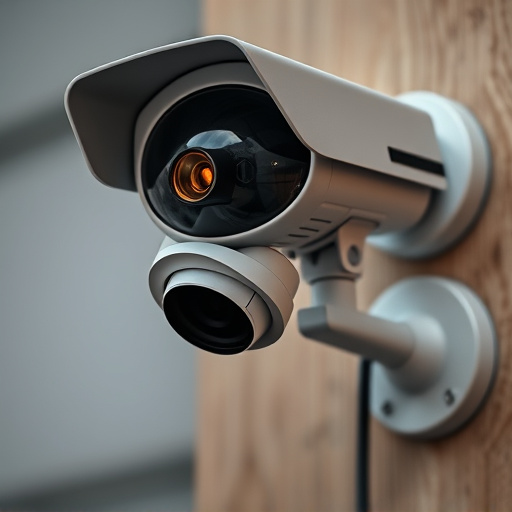Fake CCTV cameras, strategically placed, act as powerful visual deterrents against criminals, mimicking real systems to create an illusion of enhanced security. Their cost-effectiveness and proven success in various settings make them valuable for both home and business protection. By integrating them seamlessly into environments and avoiding obvious spots, their realistic installation significantly increases the deterrent effect. While initial studies show mixed results, well-placed fake cameras can reduce crime rates, but regular maintenance is crucial to maintain their impact. Combining fake with actual security systems could offer a stronger crime prevention approach.
“Uncover the power of deception with fake security cameras, a unique deterrent in modern crime prevention strategies. These simulated CCTV devices, complete with phony wiring, offer an intriguing approach to enhancing home and business security. This article explores the psychology behind their impact, from deterring potential thieves to the art of strategic placement. We delve into research on their effectiveness, providing insights into how these fake cameras can influence real crime rates, making them a game-changer in security solutions.”
- Understanding Fake Security Cameras and Their Purpose
- The Psychological Impact: How Simulated Wiring Works
- Installation and Placement Strategies for Maximum Deterrent Effect
- Evaluating the Success Rate and Long-term Effects on Crime Prevention
Understanding Fake Security Cameras and Their Purpose
Fake security cameras, often referred to as dummy or decoy cameras, are designed to mimic real CCTV systems, offering a powerful visual deterrent against potential criminals. Their primary purpose is not to capture actual footage but to convey a strong message of surveillance, thereby reducing the likelihood of unauthorized activities. These fake cameras can be an effective tool for businesses and homeowners looking to enhance their security without investing heavily in extensive surveillance systems.
By strategically placing these simulated cameras around properties, individuals can create the illusion of enhanced security, acting as a psychological barrier for intruders. The deterrent effect lies not only in the physical presence of the camera but also in the knowledge that any attempted misbehavior may be witnessed and recorded, even if the footage is not actual or accessible. This simple yet clever approach has proven valuable in various settings, from retail stores to residential neighborhoods, as a cost-effective security measure.
The Psychological Impact: How Simulated Wiring Works
The psychological impact of fake security cameras, particularly those with simulated wiring, cannot be understated. This innovative technology has been proven to significantly enhance security deterrence. By strategically placing a fake CCTV camera with realistic-looking wiring, potential intruders are led to believe that they are under constant surveillance. This perceived risk can act as a powerful deterrent, discouraging unauthorized entry or malicious activities.
The effectiveness of simulated wiring lies in its ability to create an authentic appearance and instill a sense of fear among would-be criminals. Even if the camera is not recording or transmitting footage, the mere presence of a well-crafted fake CCTV device can alter an individual’s behavior. This psychological manipulation, often referred to as the “deterrent effect,” is a valuable asset in enhancing home and business security without the need for extensive physical surveillance infrastructure.
Installation and Placement Strategies for Maximum Deterrent Effect
The strategic placement and proper installation of fake security cameras are key to enhancing real surveillance systems’ deterrent effect. When simulating a fully functional CCTV setup, consider positioning them in areas that offer optimal visibility, such as entry points, windows, and high-value asset locations. This can deter potential intruders by creating the illusion of constant observation. The use of reflective surfaces and well-lit environments around these fake cameras further amplifies their deterrent capabilities.
To maximize effectiveness, avoid placing them in obvious spots where they might be easily recognized as fakes. Instead, integrate them seamlessly into the environment, leveraging corners or less conspicuous areas. Additionally, ensure power connections are cleverly hidden, mimicking real wiring. This attention to detail not only increases the cameras’ realism but also reinforces their intended purpose—scaring off would-be criminals by broadcasting the presence of an advanced security system.
Evaluating the Success Rate and Long-term Effects on Crime Prevention
The success rate of fake security cameras, or dummy CCTV systems, as deterrents is a topic of growing interest in crime prevention strategies. While numerous studies have explored their immediate impact, with mixed results, long-term effects remain less clear. Research suggests that well-placed and convincingly simulated fake cameras can significantly reduce the likelihood of criminal activity in areas they are installed. The deterrent effect is believed to stem from the perception of heightened surveillance, instilling a sense of accountability among potential offenders.
However, maintaining the effectiveness of these devices over extended periods is crucial. Over time, as the novelty factor wears off, the impact may wane. Regular maintenance and strategic replacement could be key to preserving their deterrent capabilities. Additionally, combining fake cameras with actual security systems might offer a more robust crime prevention approach, leveraging both psychological and physical security measures.
Fake security cameras, particularly those with simulated wiring, offer a unique approach to crime prevention. While their physical presence acts as a deterrent, the psychological impact of the simulated wiring further enhances their effectiveness. Strategically installed, these fake cameras can significantly reduce criminal activity over time. However, evaluating their success rate requires ongoing research and real-world data. Despite some debates about their long-term effects, numerous studies suggest that well-placed fake CCTV cameras can indeed serve as powerful deterrents, contributing to safer communities in various settings.
